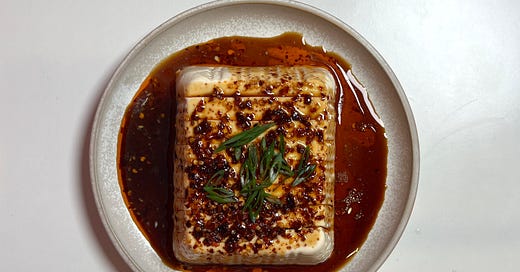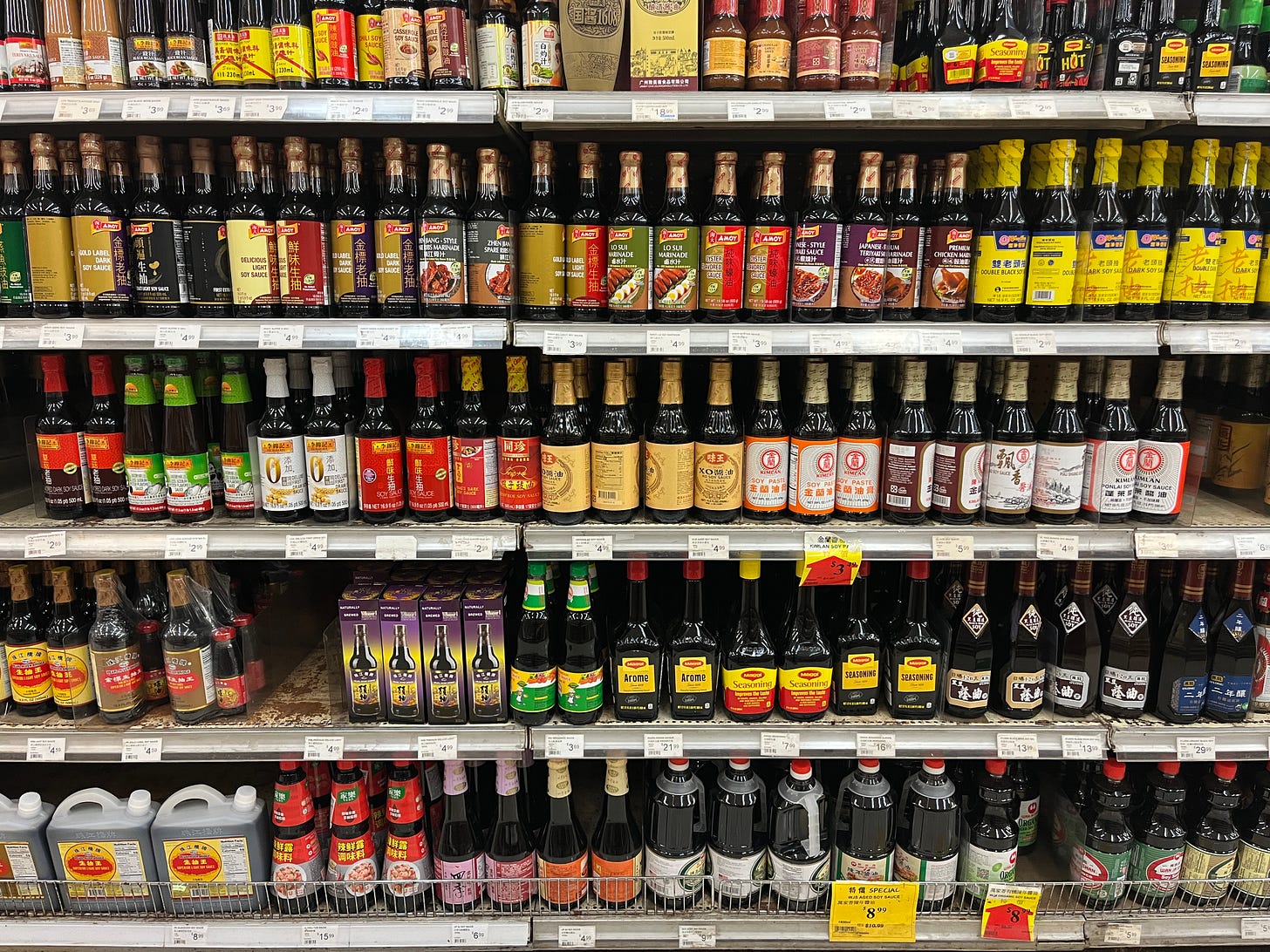The rising cost of cooking from my culture
How tariffs are quietly gutting the Chinese pantry and how I’m adapting
Growing up in a California suburb, the Chinese grocery store was more than a place to stock up—it was where culture lived, where family gathered, and where I learned my identity.
Our fishmonger spoke four languages: English, Cantonese, Spanish, and Mandarin, switching between them effortlessly as he hoisted live Dungeness crabs from the tank for the aunties and uncles to inspect. My aunt would drive in from a few cities over just to shop here, then swing by our house with bags of produce and life advice.
Sure, sometimes we trekked to the city for specific ingredients or cheaper produce and I’d listen to my father grumble about parking, but we never questioned whether we could get doubanjiang, Sichuan peppercorns, or mustard greens. And we knew how lucky we were—the city I grew up in was a suburban Chinatown.
But now, access feels fragile again.
There’s a new challenge on the horizon: tariffs. And not the abstract kind you skimmed in econ class. These are real, rising costs on pantry staples that make Chinese cooking possible. Starting this year, the U.S. has proposed or implemented new tariffs on a wide range of imported goods from China. While headlines focus on tech and metals, food has become quiet collateral.
For Chinese-American home cooks, that means our $2.99 Shaoxing wine might creep up to $5. It means the already niche selection at mainstream grocery stores will shrink even more. It means ingredients that are already hard to find—especially for those of us who aren’t Cantonese, the dominant Chinese diaspora in the U.S.—might become downright inaccessible. It means small importers bringing in region-specific ingredients like Baoning vinegar or Zigong salt might get priced out altogether.
This isn’t just about home kitchens. Tariffs play into a larger narrative that casts China as an enemy—and that narrative has consequences. It shapes how people perceive the value of Chinese food. In the eyes of many, our cuisine is still stuck in the stereotype of cheap takeout with comically large portions. With prices rising, how will restaurants defend their menu prices, contend with uncertainty, let alone uphold dignity of an entire cuisine?
And here’s the thing: Chinese food has always adapted. Diaspora cooking is built on substitution and survival. My family swapped green garlic for leeks. We’ve used spaghetti when alkaline noodles weren’t an option. But it still stings to think that a cuisine as foundational and diverse as ours can be pushed into inaccessibility.
So, what now? We continue adapting not just out of curiosity, but necessity.
1. Choosing Pantry MVPs
As I use up what’s in my fridge door and pantry shelves, I’m narrowing down to a few irreplacable staples: Pixian doubanjiang, black vinegar, douchi, yacai, and Sichuan peppercorns. I’m not as particular about other condiments, but this handful is my ride-or-die to cook Sichuanese cuisine. Otherwise, Japanese shoyu or Korean sesame oil get the job done just fine.
2. Making More from Scratch
Instead of reaching for pre-made pickles and sauces, I’m building more of my own base ingredients. Think pickled mustard greens, Hunan chopped chili sauce, and homemade chili crisp (gochugaru and arbol chilis make a passable substitute for erjintiao and xiaomila chilis). I like to think my grandfather would be proud I’m carrying on a collection of jars and ferments.
3. Support Local Importers
Shop in-person and from small businesses like Yun Hai Taiwanese Pantry (big fan of the Amber River Soy Sauce) or The Mala Market (the only place I’ve found Sichuan-style douchi in the US). Yes, sometimes it costs more, but their artisan products are far higher quality than the grocery store and I’m voting with my dollar.
4. Embracing Seasonal, Local Veg
When gai lan or lotus root aren’t around, I’m looking to local produce, like broccolini and asparagus or jicama. The spirit of the dish stays intact even if the ingredients flex. Substitution has always been part of Chinese-American cooking.
Recipe: 2-minute marinated tofu
In the spirit of honoring my favorite Chinese pantry ingredients, I wanted to re-share my easiest recipe to date: 2-Minute Marinated Tofu.
As the weather has been getting warmer here in New York, this is a quick meal I’ve been revisiting. It’s high protein, packed with flavor, and so simple that I can assemble between meetings while reheating my rice in the microwave—in 138 seconds to be exact.







My dad feeling very justified now about his hoarding so many bottles of his favorite brands of shaoxing wine and chinkiang vinegar 🥲
I've definitely been taking the access I have to ingredients and culinary innovation for granted being based in NYC.